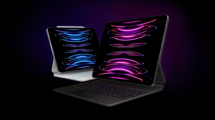Use of technology has never been this omnipresent as perhaps the ongoing Rio Olympics 2016. Not only has the use of technology and data analytics permeated almost every aspect of the game, be it from the planning to the actual execution on the field by the athletes, what makes the change beneficial to the athletes is that it is proving handy in preventing injuries to them as well. This, in turn, has ensured they are at the pinnacle of their performance capability each time they venture out in their respective events. No wonder, such technology backed approach by the individual teams have only gone up from what was evident during the last edition of the mega sporting event in London 2012.
“Real-time data analytics may not seem like a big leap from an innovation point of view, but it has the potential to enable yet more records to be broken in 2016,” says Dr. Helen Meese, head of healthcare at the Institution of Mechanical Engineers.
Tailor made software helping teams to device winning strategy
A trend also evident in the Rio Olympics 2016 is that the teams have tied up with experts in creating the software they need that when fed with the relevant data can help chart out their future course of action.
For instance, sailor Philipp Buhl from Germany will know exact what currents will come into play or what the wind pattern will be prevalent once he hits Rio’s famous Guanabara Bay. This, in turn, will allow his to chart his course accordingly.
Similarly, there will be a detailed analysis report of the opponents available to the sports teams. That coupled with the individual player’s strength and weaknesses will allow them to come up with just the right strategy that will ensure them maximum chances of securing a medal.
Similarly, the training schedule to be followed too can be planned keeping in mind the player’s body parameters prevalent at a given time coupled to the load they can cope up with. As Nick Brown, deputy director, performance science and innovation at the Australian Institute of Sport, points out that it has helped them achieve maximum training time by reducing injuries.
Use of simulators, augmented, and virtual reality
Another interesting trend in imparting the best possible training to the competitors is the use of simulators. Those are virtual environments that the players are subjected to and have built-in obstacles and such to ensure the players are prepared for all situations conceivable to allow them to perform to their optimum.
With the use of virtual and augmented reality already picking up, it shouldn’t come as a surprise if sporting teams around the world show a greater reliance on these new age tech tools to hone their skills further for such events in future.




Add Comment